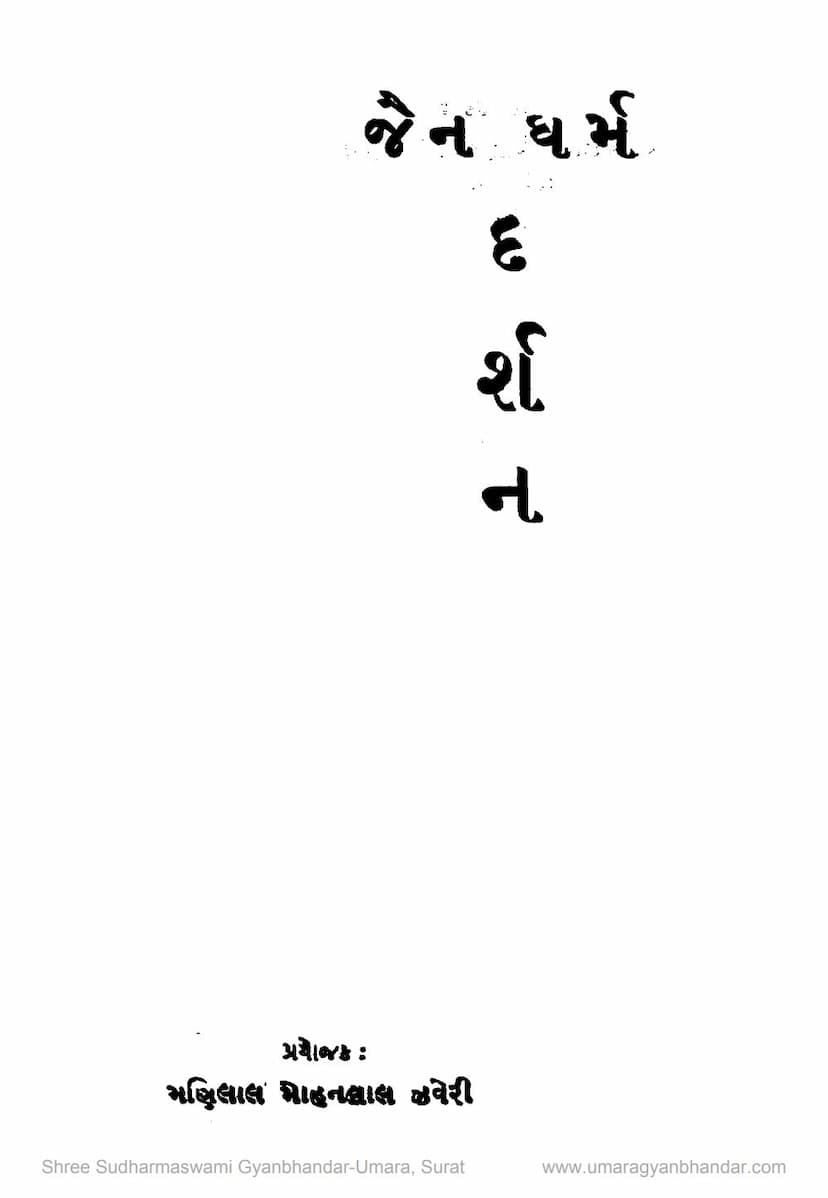Jain Dharm Darshan
Added to library: September 1, 2025

Summary
This document is the preface and table of contents for "Jain Dharm Darshan" by Manilal Mohanlal Zaveri, published by Manilal Mohanlal Zaveri. The preface highlights the author's realization during his travels in Europe that Jainism is largely unknown outside of India, despite the significant contributions of Jainism to philosophy, ethics, and logic.
The author expresses his desire to bridge this knowledge gap by making Jain teachings accessible to a wider audience, particularly in simpler language. He notes that while Hindu and Buddhist philosophies are relatively well-known, Jainism remains obscure to many. He recounts instances where Europeans, after learning about Jainism, requested books in English, which he was unable to provide due to a lack of suitable introductory literature.
The book is intended to be a guide for Jain students and anyone interested in understanding Jainism. It aims to provide a concise yet comprehensive overview of Jainism's principles and history. The author acknowledges his limitations as a writer, stating that his language will reflect that of a businessman rather than a scholar, but his goal is to present the information clearly and engagingly.
The book is divided into two parts:
Part One (Pūrvārdh): This section covers the following topics:
- Introduction: Definition, antiquity, misconceptions about Jainism, similarities and differences between Mahavira and Buddha, Ahimsa (non-violence), Karma, the concept of the universe not having a creator, Navatatva (nine realities), Time, and the Sangha (community).
- History of Jainism's Spread: Evidence from inscriptions and art, and the propagation of Jainism against Hinduism by Jain and Buddhist religions.
- Jainism in Major Kingdoms: The influence of Jainism during the reigns of Chandragupta, Bindusara, Ashoka, Samprati, Kharavela, Vikramaditya, Munja-Bhoj, and its spread in Gujarat, including the role of Gujarati kings.
- Jainism in the South and its Influence.
- Jain Literature and Scholars: Discusses the Agamas, Upangas, Prakirna Sutras, Cheda Sutras, Mula Sutras, Chulika Sutras, and highlights prominent scholars like Bhadrabahu, Umaswati, Padaliptasuri, Siddhasen Divakar, Devardhigani, Kundakundacharya, Haribhadrasuri, Hemchandracharya, Hirvijayasuri, Samaysundar, Anandghanji, Vinayavijay, and Atm<bos>aramji.
- Code of Conduct: Detailing the principles for monks (Sadhu-Dharma) and lay followers (Shravaka-Dharma), including their daily routines.
- Jains and Idol Worship: Discusses the antiquity and art associated with Jainism, mentioning pilgrimage sites like Shatrunjaya, Girnar, Sametshikhar, Abu, Taranga, Kesarji, Ranakpur.
- Bhagavan Rishabhdev and Bhagavan Mahavir: Brief accounts of the lives of the first and last Tirthankaras.
Part Two (Uttarardh): This section, authored by Muni Maharaj Shri Nyayavijayji, delves into philosophical aspects:
- Tattva (Realities): Explains the nine fundamental principles: Jiva (soul), Ajiva (non-soul), Puny (merit), Paap (demerit), Asrava (influx of karma), Samvara (cessation of karma), Bandha (bondage of karma), Nirjara (eradication of karma), and Moksha (liberation). It also discusses Ishvara (God) and the concept of Karma.
- Path to Moksha: Outlines the Jaina path to liberation through Samyak-gyan (right knowledge), Samyak-charitra (right conduct), and the principles of Sadhu-Dharma. It also touches upon the concept of Devatattva (divine principles) and Gurutatva (teacher principle).
- Jain Conduct: Details the conduct for monks and householders, including specific rules like the prohibition of night-time eating.
- Syadvada: Explains the Jaina doctrine of conditional predication, also known as Anekantavada (non-absolutism) and relative predication.
- Comparative Jainism: Discusses the significance of Jainism in comparative religion and philosophy, highlighting its unique contributions.
The preface also includes a correction regarding the place of Mahavira's nirvana.
Overall, the document serves as an introduction to the comprehensive exploration of Jain philosophy, history, literature, and practice presented in the book "Jain Dharm Darshan."